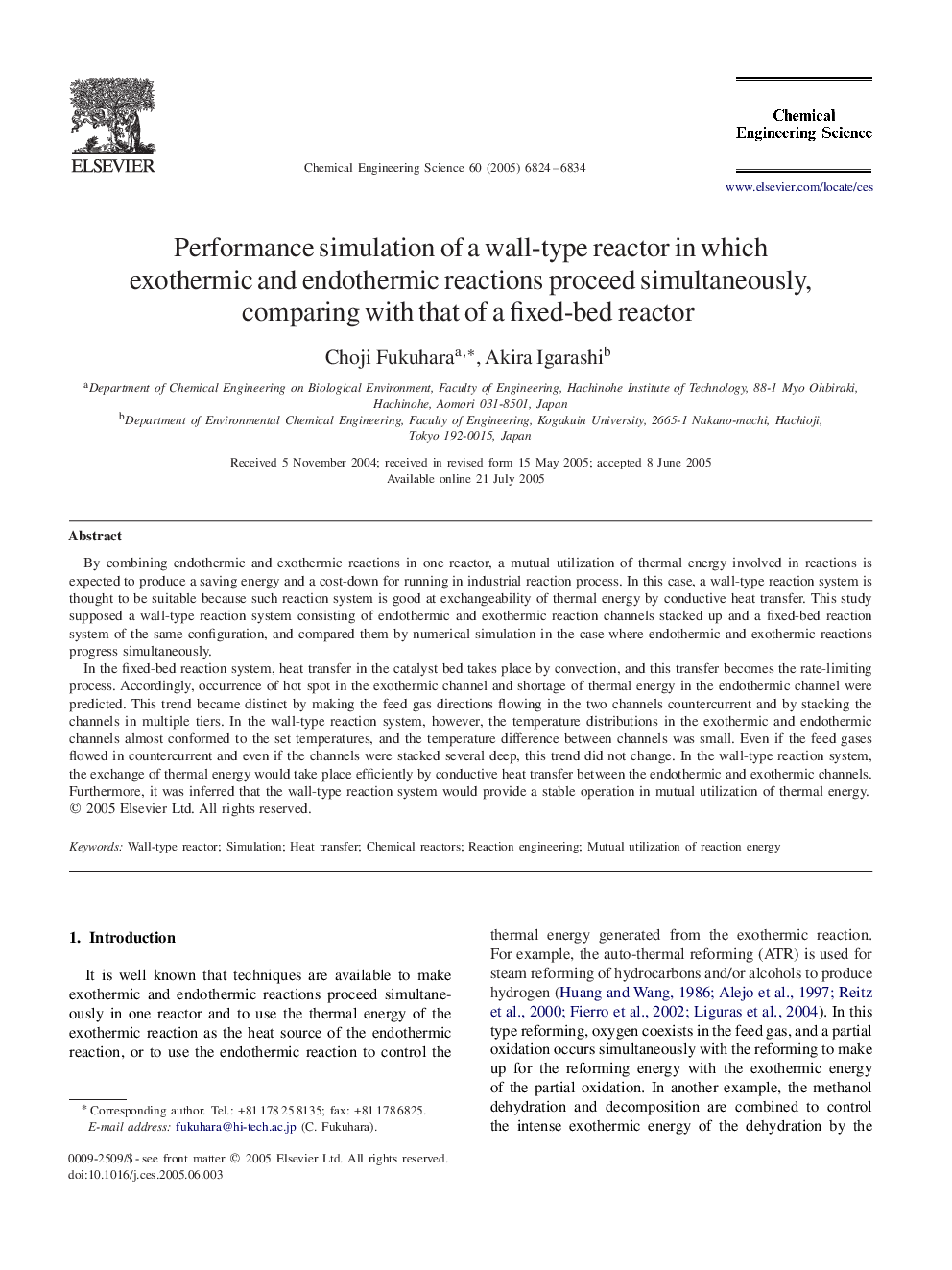| Article ID | Journal | Published Year | Pages | File Type |
|---|---|---|---|---|
| 160143 | Chemical Engineering Science | 2005 | 11 Pages |
By combining endothermic and exothermic reactions in one reactor, a mutual utilization of thermal energy involved in reactions is expected to produce a saving energy and a cost-down for running in industrial reaction process. In this case, a wall-type reaction system is thought to be suitable because such reaction system is good at exchangeability of thermal energy by conductive heat transfer. This study supposed a wall-type reaction system consisting of endothermic and exothermic reaction channels stacked up and a fixed-bed reaction system of the same configuration, and compared them by numerical simulation in the case where endothermic and exothermic reactions progress simultaneously.In the fixed-bed reaction system, heat transfer in the catalyst bed takes place by convection, and this transfer becomes the rate-limiting process. Accordingly, occurrence of hot spot in the exothermic channel and shortage of thermal energy in the endothermic channel were predicted. This trend became distinct by making the feed gas directions flowing in the two channels countercurrent and by stacking the channels in multiple tiers. In the wall-type reaction system, however, the temperature distributions in the exothermic and endothermic channels almost conformed to the set temperatures, and the temperature difference between channels was small. Even if the feed gases flowed in countercurrent and even if the channels were stacked several deep, this trend did not change. In the wall-type reaction system, the exchange of thermal energy would take place efficiently by conductive heat transfer between the endothermic and exothermic channels. Furthermore, it was inferred that the wall-type reaction system would provide a stable operation in mutual utilization of thermal energy.
